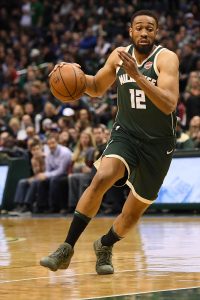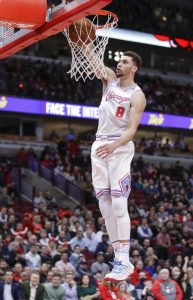Hoops Rumors is breaking down the 2018 offseason for all 30 NBA teams, revisiting the summer’s free agent signings, trades, draft picks, departures, and more. We’ll evaluate each team’s moves from the last several months and look ahead to what the 2018/19 season holds for all 30 franchises. Today, we’re focusing on the Charlotte Hornets.
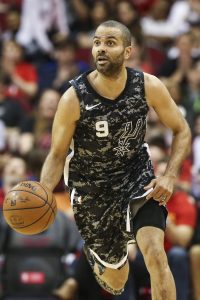
Signings:
- Standard contracts:
- Tony Parker: Two years, $10.25MM. Second year non-guaranteed. Signed using mid-level exception.
- Two-way contracts:
- Non-guaranteed camp contracts:
- Jaylen Barford: One year, minimum salary.
- Joe Chealey: One year, minimum salary.
- Zach Smith: One year, minimum salary.
- Isaiah Wilkins: One year, minimum salary.
Trades:
- Acquired the draft rights to Miles Bridges (No. 12 pick), the Cavaliers’ 2020 second-round pick, and the Clippers’ 2021 second-round pick from the Clippers in exchange for the draft rights to Shai Gilgeous-Alexander (No. 11 pick).
- Acquired the draft rights to Devonte’ Graham (No. 34 pick) from the Hawks in exchange for the Hornets’ 2019 second-round pick and the Hornets’ 2023 second-round pick.
- Acquired Timofey Mozgov, the draft rights to Hamidou Diallo (No. 45 pick), the Nets’ 2021 second-round pick, and cash ($5MM) from the Nets in exchange for Dwight Howard.
- Acquired the Thunder’s 2019 second-round pick and cash ($243K) from the Thunder in exchange for the draft rights to Hamidou Diallo (No. 45 pick).
- Acquired Bismack Biyombo, either the Wizards’ or Nuggets’ 2019 second-round pick (whichever is less favorable), and either the Nets’ or Knicks’ 2020 second-round pick (whichever is less favorable) in a three-way trade with the Bulls and Magic in exchange for Timofey Mozgov (to Magic) and Julyan Stone (to Bulls).
Draft picks:
- 1-12: Miles Bridges — Signed to rookie contract.
- 2-34: Devonte’ Graham — Signed to three-year, $4.07MM contract. First two years guaranteed. Signed using mid-level exception.
- 2-55: Arnoldas Kulboka — Will play overseas.
Departing players:
- Michael Carter-Williams
- Treveon Graham
- Dwight Howard
- Mangok Mathiang (two-way; waived)
- Marcus Paige (two-way)
- Julyan Stone
Other offseason news:
- Hired James Borrego as head coach to replace Steve Clifford; finalized coaching staff.
- Named Joe Wolf new head coach of G League affiliate Greensboro Swarm.
Salary cap situation:
- Remained over the cap.
- Carrying approximately $120.3MM in guaranteed salaries.
- Hard-capped at $129.82MM.
- $2.65MM of mid-level exception still available ($5.99MM used on Tony Parker and Devonte’ Graham).
- Full bi-annual exception ($3.38MM) still available.
Check out the Charlotte Hornets’ full roster and depth chart at RosterResource.com.
Story of the summer:
The Hornets were the only NBA team to separately replace both their head of basketball operations (Rich Cho) and their head coach (Steve Clifford) this spring, a sign that team ownership was dissatisfied with the latest stretch of mediocrity in Charlotte.
Since re-entering the NBA as an expansion team in 2004, Charlotte has finished above .500 just three times and has never won a postseason series. During the last two years of Cho’s and Clifford’s respective tenures, the team posted identical 36-46 records, unable to earn a playoff spot in a subpar Eastern Conference.
In an effort to turn things around, the Hornets brought in former Lakers general manager Mitch Kupchak to run the team and hired Spurs assistant James Borrego as their new head coach. There’s no doubt that the two men have winning pedigrees — they combined for six titles in Los Angeles and San Antonio, respectively.
Still, Kupchak’s tenure in L.A. ended with a series of questionable roster moves, and Borrego’s only NBA head coaching experience came when he went 10-20 as the Magic’s interim coach in 2014/15. They’ll have to prove themselves all over again in their new roles with the Hornets, but the roster they inherited – loaded with pricey multiyear contracts – didn’t give them a real opportunity to put a stamp on the franchise this summer.
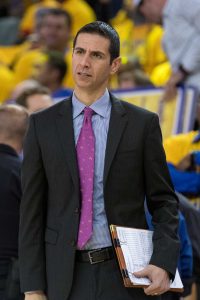
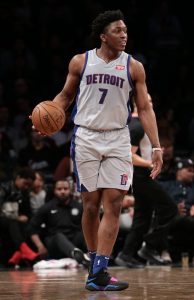 Why the Pistons should give him an extension:
Why the Pistons should give him an extension: